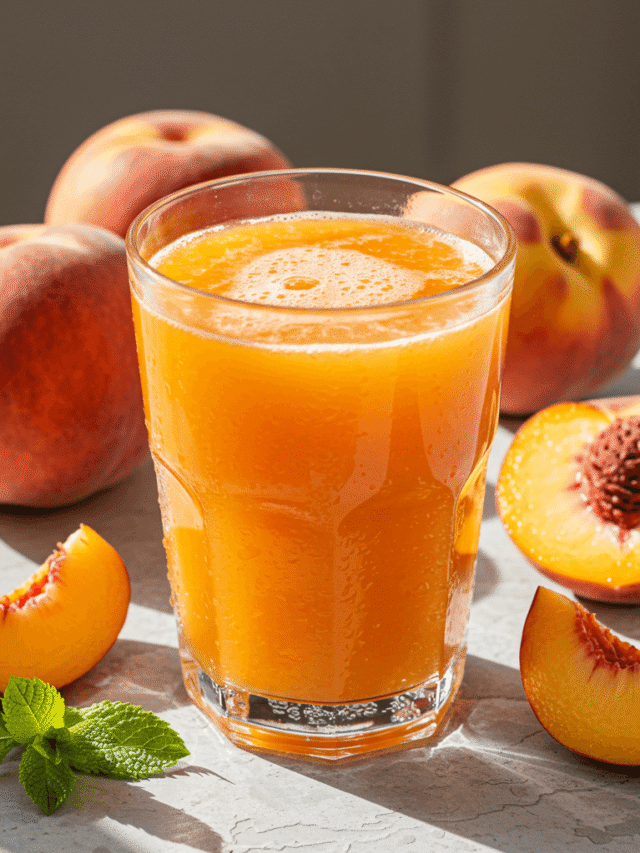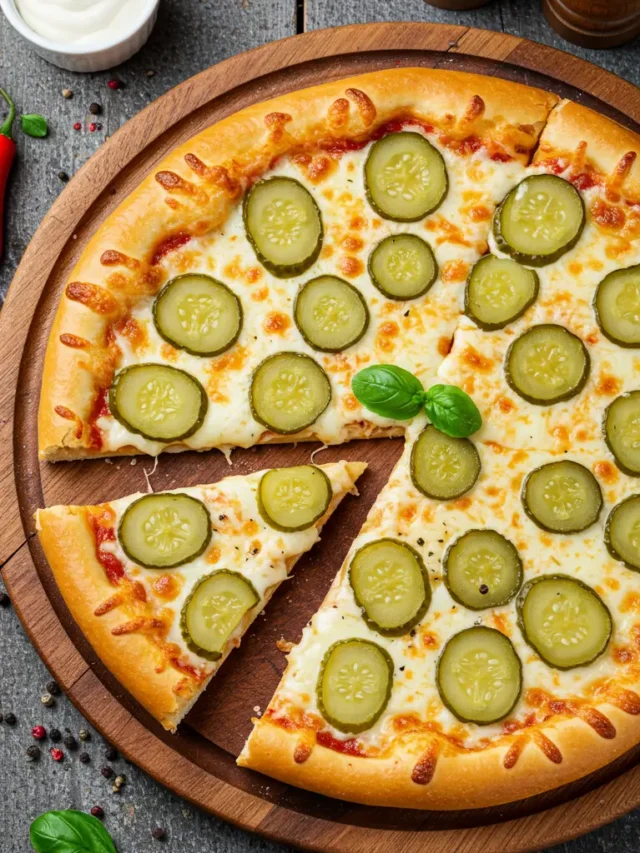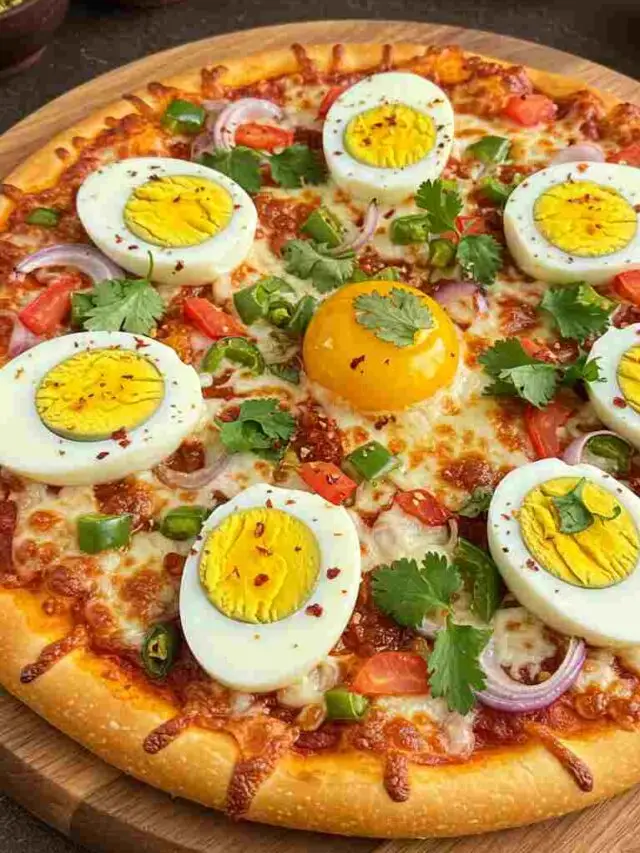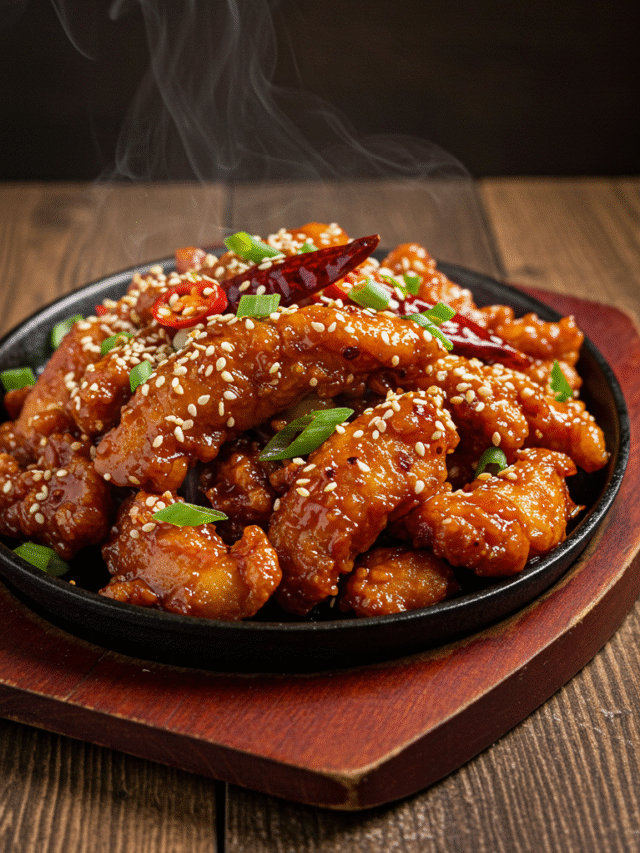Introduction to Garlic Parmesan Chicken Pasta
Garlic parmesan chicken pasta stands as one of America’s most beloved comfort foods. This creamy, savory dish combines tender chicken pieces with perfectly cooked pasta in a rich, garlic-infused parmesan sauce. Home cooks across the country have made this recipe a weeknight dinner staple.
The magic happens when you blend fresh garlic with quality parmesan cheese and heavy cream. Many families consider this garlic parmesan chicken pasta their go-to solution for busy evenings. The food safety guidelines for chicken recommend proper handling techniques that we’ll cover in our preparation steps. Restaurant chefs often charge premium prices for similar dishes, but you can create restaurant-quality results in your own kitchen.
Italian-American cuisine has given us countless pasta variations, yet this particular combination never fails to impress. The nutritional benefits of garlic include immune system support and heart health properties. Most home cooks can prepare this entire garlic parmesan chicken pasta meal in under 30 minutes using simple ingredients from their local grocery store.
The Perfect Garlic Parmesan Chicken Pasta Recipe
Ingredients You’ll Need
Creating the perfect garlic parmesan chicken pasta starts with selecting quality ingredients. Fresh ingredients make a noticeable difference in both flavor and texture.
For the Chicken:
• 1 pound boneless, skinless chicken breasts (cut into bite-sized pieces)
• 2 teaspoons Italian seasoning
• 1 teaspoon garlic powder
• Salt and black pepper to taste
• 2 tablespoons olive oil
For the Pasta and Sauce:
• 12 ounces fettuccine pasta (or your preferred long pasta)
• 4 cloves fresh garlic (minced)
• 3 tablespoons butter
• 1 cup heavy cream
• 1 cup freshly grated parmesan cheese
• ½ cup pasta cooking water (reserved)
• Fresh parsley for garnish
• Red pepper flakes (optional)
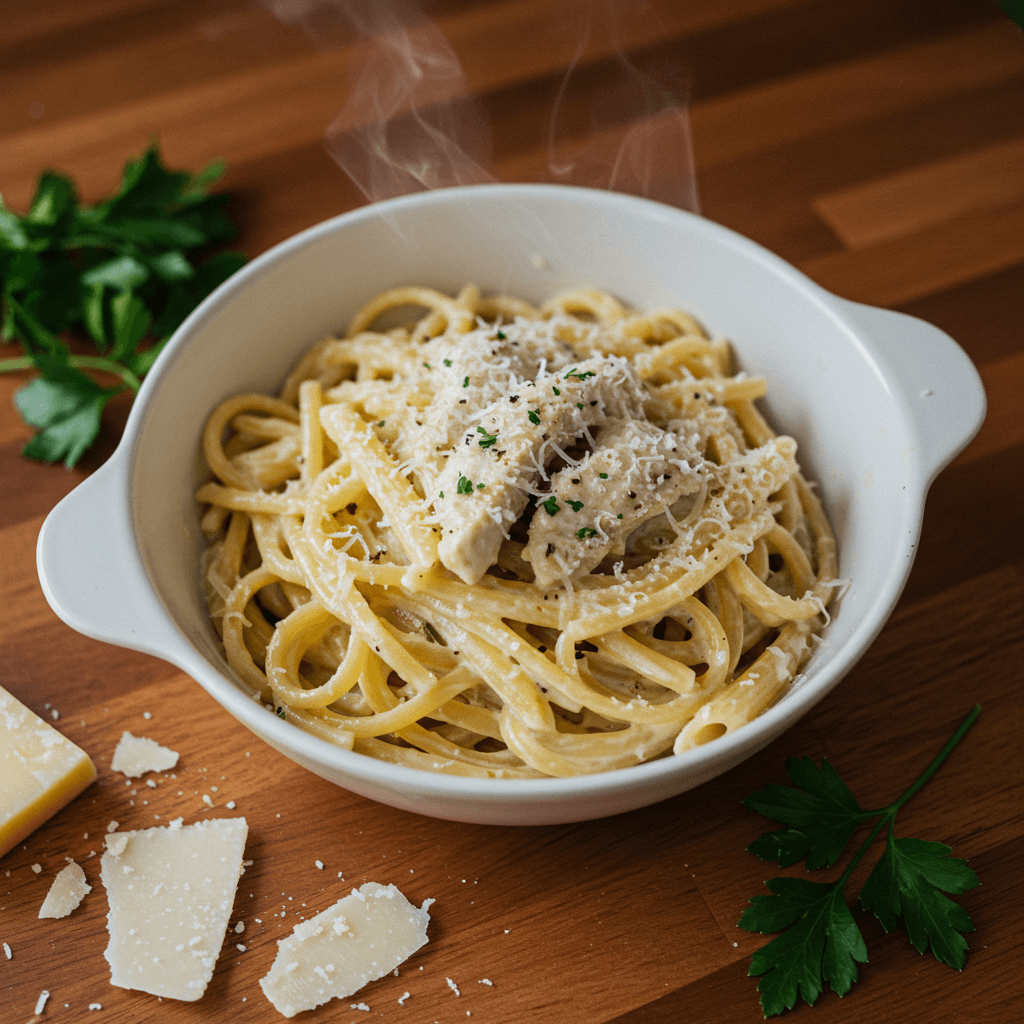
Fresh herbs always taste better than dried versions. Quality parmesan cheese makes the biggest difference in your final sauce. Avoid pre-shredded cheese when possible—freshly grated cheese melts smoother and creates better texture for your garlic parmesan chicken pasta.
Step-by-Step Cooking Instructions
Start by bringing a large pot of salted water to boil. Salt your pasta water generously—it should taste like seawater. This step seasons the pasta from the inside out.
Prepare the Chicken:
• Cut chicken breasts into uniform, bite-sized pieces
• Season with Italian seasoning, garlic powder, salt, and pepper
• Heat olive oil in a large skillet over medium-high heat
• Cook chicken pieces for 6-8 minutes until golden brown and cooked through
• Remove chicken and set aside on a plate
Cook the Pasta:
• Add pasta to boiling water according to package directions
• Cook until al dente (slightly firm to the bite)
• Reserve 1 cup of pasta cooking water before draining
• Drain pasta but don’t rinse it
Create the Sauce:
• In the same skillet, reduce heat to medium
• Add butter and let it melt completely
• Add minced garlic and cook for 30 seconds until fragrant
• Pour in heavy cream and bring to a gentle simmer
• Gradually whisk in parmesan cheese until smooth
• Add cooked chicken back to the skillet
• Toss in drained pasta with reserved pasta water as needed
• Season with salt, pepper, and red pepper flakes
The authentic Italian pasta cooking methods emphasize the importance of pasta water starch for creating silky sauces, which is especially crucial when preparing garlic parmesan chicken pasta.
Pro Tips for Restaurant-Quality Results
Professional chefs use several techniques to create superior garlic parmesan chicken pasta. Temperature control prevents the cheese from clumping or separating.
• Don’t let the cream boil—keep it at a gentle simmer to prevent curdling
• Add cheese gradually—this prevents lumpy sauce texture
• Use pasta water wisely—the starch helps bind everything together
• Serve immediately—cream sauces taste best when hot and fresh
• Warm your serving bowls—this keeps the pasta hot longer
Common Mistakes to Avoid:
• Adding cheese to sauce that’s too hot causes separation
• Overcooking chicken makes it tough and dry
• Skipping the pasta water removes natural thickening power
• Using cold ingredients straight from the refrigerator
This comfort food recipe works perfectly for family dinners, date nights, or casual entertaining. The combination of protein, carbs, and creamy sauce in this garlic parmesan chicken pasta satisfies even the pickiest eaters. Many home cooks find this recipe becomes their signature dish after just one successful attempt.
Understanding Garlic Parmesan Sauce
Garlic parmesan sauce forms the heart of this beloved garlic parmesan chicken pasta dish. Most home cooks struggle with creating the perfect creamy texture without lumps or separation. The secret lies in understanding how each ingredient works together to create that restaurant-quality finish.
Professional chefs know that timing and temperature control make the difference between success and disaster. Fresh garlic releases different flavor compounds when you cook it gently versus aggressively. Parmesan cheese contains specific proteins that react differently at various temperatures, which is critical when preparing a flawless garlic parmesan chicken pasta sauce.
What is Parmesan Garlic Sauce Made Of?
The foundation of any great garlic butter sauce—and by extension, a successful garlic parmesan chicken pasta—starts with just five basic ingredients. Each component serves a specific purpose in creating the final texture and flavor profile.
Essential Base Ingredients:
• Fresh garlic – provides the aromatic foundation and sharp flavor notes
• Quality parmesan cheese – adds nutty, salty depth and natural thickening power
• Heavy cream – creates the rich, velvety texture that coats pasta perfectly
• Butter – adds richness and helps emulsify the sauce components
• Pasta water – contains starch that binds everything together naturally
Flavor Enhancement Options:
• White wine (adds acidity and complexity)
• Fresh herbs like parsley, basil, or thyme
• Red pepper flakes for gentle heat
• Black pepper for subtle spice
• Lemon juice for brightness (add at the end)
The cheese sauce relies on the natural oils in parmesan and the fat content in heavy cream. These fats help carry flavors throughout the dish while creating that signature coating on each pasta strand in garlic parmesan chicken pasta. Many recipes fail because cooks add ingredients in the wrong order or at incorrect temperatures.
Quality Matters Most:
Real parmesan cheese (Parmigiano-Reggiano) melts differently than processed alternatives. The aging process creates unique flavor compounds that you can’t replicate with cheaper substitutes. Fresh garlic tastes significantly better than pre-minced versions from jars, which directly affects the depth of flavor in your garlic parmesan chicken pasta.
How to Make Creamy Garlic Pasta Sauce
Creating the perfect creamy pasta sauce requires attention to detail and proper technique. Temperature control prevents the most common problems that ruin homemade sauces—and it’s the cornerstone of an ideal garlic parmesan chicken pasta.
Step-by-Step Sauce Method:
- Start with butter – melt it slowly over medium heat to prevent burning
- Add minced garlic – cook for 30–45 seconds until fragrant but not brown
- Pour in cream gradually – this prevents temperature shock and curdling
- Bring to gentle simmer – never let cream sauces reach a rolling boil
- Add cheese slowly – sprinkle small amounts while whisking constantly
- Adjust with pasta water – add tablespoons at a time for perfect consistency
Temperature Guidelines:
• Keep heat at medium or lower throughout the process
• Cream should barely bubble around the edges
• Remove from heat if sauce starts to break or curdle
• Add cold ingredients slowly to prevent temperature shock
Texture Troubleshooting:
• Too thick? Add pasta water one tablespoon at a time
• Too thin? Simmer gently to reduce, or add more cheese
• Lumpy cheese? Your heat was too high – strain and start over
• Separated cream? Remove from heat and whisk in cold cream slowly
Professional Techniques:
Many restaurant chefs finish their garlic cream sauce with a pat of cold butter. This technique, called “mounting,” creates extra glossiness and richness. The cold butter also helps stabilize the emulsion and prevents breaking—making your garlic parmesan chicken pasta look and taste like it came from a high-end restaurant.
Make-Ahead Tips:
Fresh cream sauces taste best when served immediately. However, you can prepare components ahead of time. Mince garlic and grate cheese earlier in the day. Keep everything at room temperature before cooking to prevent temperature shock, ensuring your garlic parmesan chicken pasta turns out silky and smooth.
Sauce Variations:
• Wine-based version – add ¼ cup white wine after garlic, reduce by half
• Herb-infused – add fresh thyme or rosemary with the garlic
• Lighter version – substitute half-and-half for heavy cream (less rich but still creamy)
• Roasted garlic – roast whole garlic bulbs beforehand for sweeter, milder flavor
The key to mastering homemade pasta sauce—and by extension, a restaurant-worthy garlic parmesan chicken pasta—lies in practice and patience. Start with small batches to perfect your technique before making larger quantities for family meals.
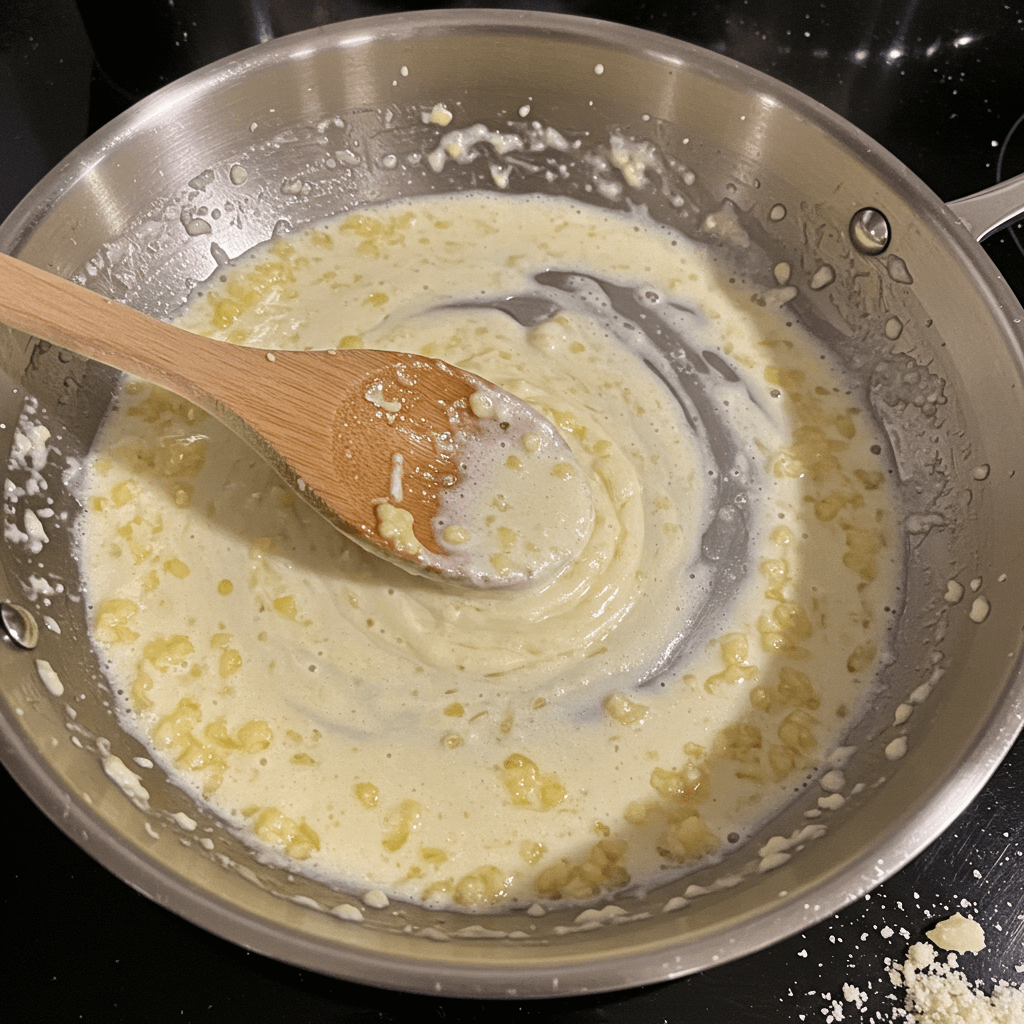
Pasta Selection and Pairing Guide
Choosing the right pasta shape makes a huge difference in your final dish. Different pasta shapes hold sauce differently and create unique eating experiences. The wrong pasta choice can turn a great sauce into a disappointing meal—especially in dishes like garlic parmesan chicken pasta, where sauce coverage is key to flavor.
Long pasta varieties work best with creamy sauces like garlic parmesan. The sauce clings to longer noodles and creates better flavor distribution in each bite. Short pasta shapes often leave too much sauce at the bottom of the bowl, which can affect the quality of your garlic parmesan chicken pasta.
What Pasta Goes with Chicken Parmesan?
Fettuccine pasta remains the classic choice for chicken parmesan dishes, including garlic parmesan chicken pasta. Its wide, flat surface area catches and holds creamy sauces perfectly. Most Italian restaurants use fettuccine for their cream-based chicken dishes for this exact reason.
Best Long Pasta Options:
• Fettuccine – wide ribbons hold sauce exceptionally well
• Linguine – slightly thinner than fettuccine but still excellent for creamy sauces
• Pappardelle – extra-wide ribbons create luxurious presentation
• Tagliatelle – similar to fettuccine with slightly different texture
• Angel hair – delicate strands work for lighter cream sauces
Why These Shapes Work:
The flat surfaces of these pasta types create maximum contact with your creamy garlic sauce, which is essential for dishes like garlic parmesan chicken pasta. Round pasta like spaghetti doesn’t hold cream sauces as effectively; the sauce slides off instead of coating each strand properly.
Texture Considerations:
Fresh pasta absorbs sauce differently than dried versions. Fresh pasta has a more tender bite and absorbs flavors more readily, making it a top choice for garlic parmesan chicken pasta. Dried pasta holds its shape better during cooking and reheating.
Cooking Time Differences:
• Fresh fettuccine: 2–3 minutes
• Dried fettuccine: 8–12 minutes
• Fresh pappardelle: 3–4 minutes
• Dried linguine: 9–11 minutes
Regional Preferences:
Northern Italian cooks prefer wider pasta with cream sauces. Southern Italian traditions favor thinner pasta with oil-based sauces. American Italian-American restaurants typically use fettuccine for chicken alfredo and similar dishes such as garlic parmesan chicken pasta.
Alternative Pasta Options
Gluten-free pasta options have improved dramatically in recent years. Many brands now offer textures that closely match traditional wheat pasta. Rice-based and chickpea pasta work particularly well with creamy sauces and are excellent substitutes in garlic parmesan chicken pasta recipes.
Gluten-Free Alternatives:
• Rice fettuccine – closest texture to traditional wheat pasta
• Chickpea linguine – adds protein and fiber to your meal
• Lentil pasta – earthy flavor complements garlic and parmesan
• Quinoa pasta – mild taste lets sauce flavors shine
• Corn pasta – slightly sweet flavor pairs well with savory sauces
Cooking Tips for Alternative Pasta:
Gluten-free pasta requires more attention during cooking. It can go from perfect to mushy very quickly. Always check doneness 1–2 minutes before package directions suggest, especially when preparing garlic parmesan chicken pasta where texture matters.
Whole Wheat Options:
Whole wheat pasta adds nutty flavor and extra fiber to your dish. The heartier texture stands up well to rich cream sauces, making it a nutritious alternative for garlic parmesan chicken pasta.
Fresh vs. Dried Pasta Comparison:
Fresh Pasta Benefits:
• Cooks faster (2–4 minutes typically)
• More tender texture
• Absorbs sauce flavors better
• Creates restaurant-quality results
• Works especially well with cream sauces like those used in garlic parmesan chicken pasta
Dried Pasta Benefits:
• Longer shelf life and convenience
• Holds shape better during cooking
• Less expensive than fresh varieties
• More widely available in stores
• Consistent results every time
Storage and Preparation:
Fresh pasta should stay refrigerated and cook within 2–3 days of purchase. Dried pasta lasts for years in pantry storage. Both types need plenty of salted boiling water for best results, especially when making garlic parmesan chicken pasta, where every component counts.
Portion Guidelines:
Plan for 3–4 ounces of pasta per person for main dishes. Chicken pasta dishes are quite filling due to the protein and cream content. Larger appetites might want 4–5 ounces per serving—particularly in hearty recipes like garlic parmesan chicken pasta.
Pasta Water Importance:
Save at least one cup of pasta cooking water before draining. The starchy water helps bind your sauce to the pasta. Professional chefs always keep pasta water handy for adjusting sauce consistency in dishes like garlic parmesan chicken pasta.
Al Dente Perfection:
Perfect pasta should have a slight firmness when you bite it. Overcooked pasta becomes mushy and won’t hold sauce properly. Undercooked pasta tastes chalky and unpleasant. Hitting that al dente mark is essential when cooking garlic parmesan chicken pasta, as texture directly affects the eating experience.
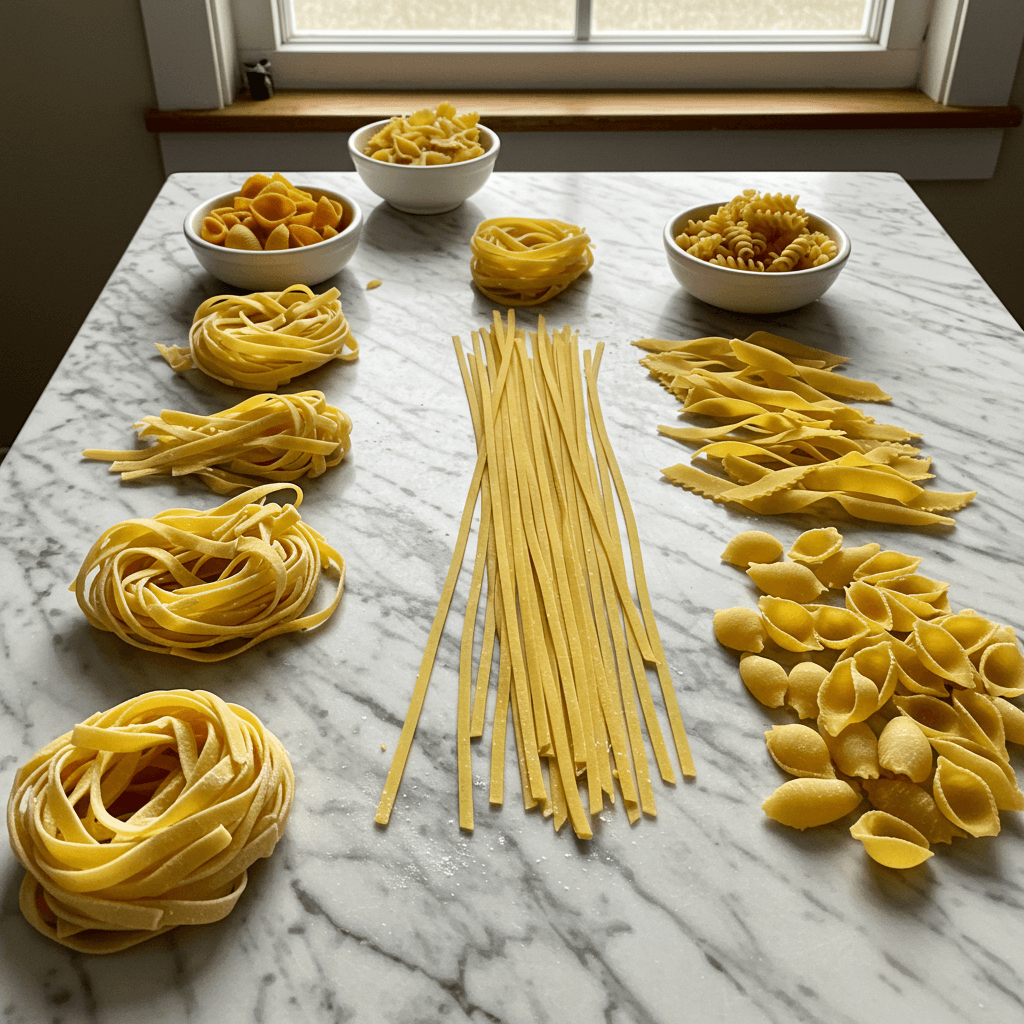
Cooking Techniques and Tips
Mastering the right techniques separates good garlic parmesan chicken pasta from truly exceptional dishes. Small details in your cooking method create dramatic differences in final results. Professional chefs rely on specific techniques that home cooks can easily learn.
Temperature control and timing make the biggest impact on your finished dish. Many home cooks rush through steps and end up with disappointing results. Taking time with each component creates restaurant-quality meals at home.
How to Melt Parmesan Cheese into Sauce
Melting parmesan cheese properly requires patience and the right approach. High heat ruins cheese sauces by causing proteins to seize up and separate. Low, gentle heat creates smooth, creamy results every time.
Temperature Control Methods: • Keep heat at medium-low throughout the melting process • Remove pan from heat if cheese starts to clump • Add cheese in small handfuls, not all at once • Whisk constantly while adding cheese to prevent lumps • Let each addition melt completely before adding more
Preventing Clumping Issues: Fresh grated parmesan melts much better than pre-shredded varieties. Pre-shredded cheese contains anti-caking agents that interfere with smooth melting. Grate your cheese right before cooking for best results.
Step-by-Step Melting Process:
- Create your cream base first and bring to gentle simmer
- Reduce heat to low before adding any cheese
- Sprinkle small amounts of grated parmesan into warm cream
- Whisk continuously in figure-eight motions
- Wait for each addition to melt completely
- Add more cheese gradually until you reach desired richness
Troubleshooting Separated Cheese: If your sauce separates or becomes grainy, don’t panic. Remove the pan from heat immediately. Add a tablespoon of cold cream and whisk vigorously. This often saves broken sauces.
Achieving Smooth Integration: Room temperature cheese melts more evenly than cold cheese straight from the refrigerator. Take your grated parmesan out 15-20 minutes before cooking. This simple step prevents temperature shock.
Chicken Preparation Methods
Perfectly cooked chicken makes the difference between good and great pasta dishes. Dry, overcooked chicken ruins even the best sauce. Juicy, well-seasoned chicken elevates the entire meal.
Seasoning Techniques: Season chicken pieces at least 15 minutes before cooking. Salt draws out moisture initially, then reabsorbs it along with seasonings. This process creates more flavorful, tender results.
Essential Chicken Seasonings: • Salt and black pepper (the foundation) • Italian seasoning blend for herb complexity • Garlic powder for extra garlic flavor • Paprika for color and mild spice • Onion powder for savory depth
Cooking Methods Comparison:
Pan-Seared Method (Most Popular): • Heat oil in large skillet over medium-high heat • Cook chicken pieces 6-8 minutes until golden brown • Don’t move pieces too early – let them develop crust • Internal temperature should reach 165°F • Creates best flavor through browning reactions
Grilled Chicken Option: • Marinate chicken pieces for extra flavor • Grill over medium heat for 8-10 minutes • Turn pieces once during cooking • Let rest 5 minutes before cutting • Adds smoky flavor to finished dish
Baked Chicken Method: • Bake at 400°F for 15-20 minutes • Season well and drizzle with olive oil • Cover with foil to prevent drying out • Check temperature with instant-read thermometer • Works well for meal prep versions
Ensuring Juicy Results: Don’t cut into chicken immediately after cooking. Let it rest for 3-5 minutes to redistribute juices. Cutting too soon releases all the moisture onto your cutting board.
What Sauce Goes Best with Chicken Pasta?
Cream-based sauces pair naturally with chicken because they complement rather than compete with mild chicken flavors. The richness of cream sauces makes chicken taste more luxurious and satisfying.
Sauce Pairing Principles: • Rich sauces work best with simply seasoned chicken • Acidic elements (lemon, wine) brighten heavy cream dishes
• Herbs should complement, not overpower, the chicken • Garlic and parmesan create the most popular flavor combination
Popular Sauce Variations: • Classic garlic parmesan – the gold standard for chicken pasta • Lemon garlic cream – adds brightness to rich dishes • Mushroom cream sauce – earthiness pairs well with chicken • Sun-dried tomato cream – adds color and tangy flavor • Pesto cream sauce – herb-forward with creamy richness
Seasonal Adaptations: Spring versions might include fresh peas and herbs like basil or parsley. Summer adaptations could feature cherry tomatoes and fresh corn. Fall versions work well with roasted butternut squash or sage.
Balancing Flavors: The best chicken pasta sauces balance richness with acidity. A splash of white wine or lemon juice cuts through cream and prevents the dish from feeling too heavy. Fresh herbs add brightness and color contrast.
Sauce Consistency Tips: Your finished sauce should coat pasta strands without being too thick or thin. It should cling to pasta and chicken pieces evenly. Use pasta cooking water to adjust consistency as needed.
Serving Temperature: Serve creamy chicken pasta immediately while hot. Cream sauces thicken as they cool and don’t reheat as well. Warm your serving bowls in a low oven to keep everything at optimal temperature longer.
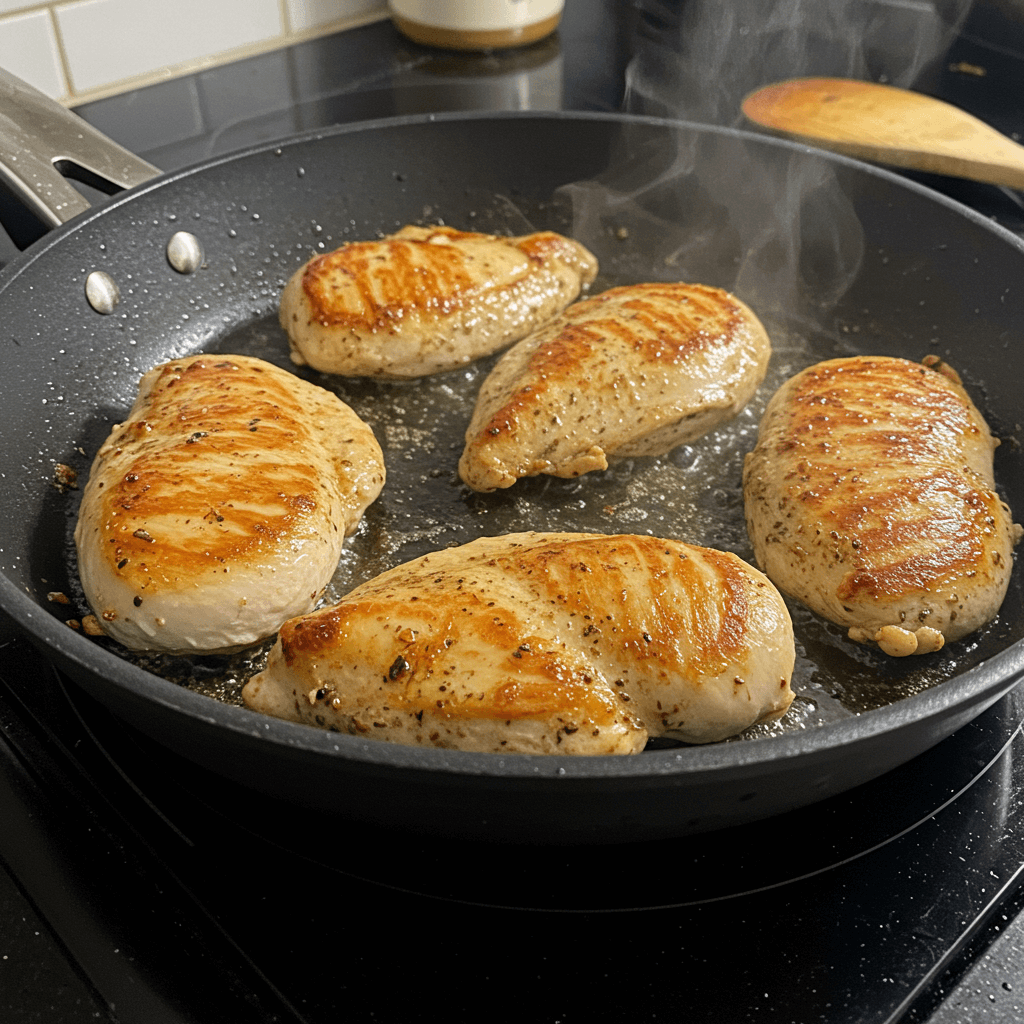
Variations and Creative Twists
Recipe variations keep your favorite dishes exciting and fresh. Home cooks can transform basic garlic parmesan chicken pasta into completely new experiences with simple ingredient swaps. These creative twists satisfy different tastes and dietary needs.
Social media has made certain pasta variations incredibly popular. Food bloggers and home cooks share their unique spins on classic recipes like garlic parmesan chicken pasta. These trending versions often become family favorites overnight.
Why is it Called “Marry Me Pasta”?
Marry me pasta became a viral sensation on social media platforms like TikTok and Instagram. The name suggests the dish tastes so incredible that someone might propose after eating it. Food bloggers created this catchy name to grab attention and shares.
Origin Story: The term started appearing on food blogs around 2018–2019. Recipe creators wanted memorable names that would stick in readers’ minds. “Marry me” suggests ultimate satisfaction and love at first bite—something many say about their first experience with garlic parmesan chicken pasta.
Social Media Phenomenon: Thousands of home cooks have posted their versions using hashtags like #marrymepasta and #marrymechicken. The name creates emotional connection and suggests special occasion dining. Many couples actually make dishes like garlic parmesan chicken pasta for anniversaries and date nights.
What Makes It Special: Marry me pasta typically features extra-rich cream sauce with sun-dried tomatoes, spinach, and lots of garlic—much like upgraded versions of garlic parmesan chicken pasta. The combination creates complex, restaurant-quality flavors with generous amounts of parmesan cheese for indulgence.
Romantic Meal Appeal: The dish works perfectly for intimate dinners at home. Cooking together becomes part of the romantic experience. Rich, satisfying flavors like those in garlic parmesan chicken pasta create memorable dining moments that couples associate with special times.
Popular Recipe Variations
Garlic parmesan chicken pasta is perfect for variation. One-pot versions, baked casseroles, and healthy tweaks keep it fresh and adaptable for different lifestyles.
One-Pot Method Benefits:
• All ingredients cook in a single large pot or skillet
• Pasta absorbs more flavor by cooking directly in sauce
• Less cleanup means more time enjoying your meal
• Flavors blend together more completely during cooking
• Perfect for weeknight dinners and meal prep
Step-by-Step One-Pot Process:
• Brown seasoned chicken pieces in a large, deep skillet
• Remove chicken and set aside on plate
• Add garlic, cream, and seasonings to same pan
• Bring mixture to gentle simmer over medium heat
• Add uncooked pasta directly to creamy sauce
• Cover and cook 12–15 minutes, stirring occasionally
• Return chicken to pan and add parmesan cheese
• Stir until cheese melts and pasta reaches perfect tenderness
Baked Casserole Style
Baked garlic parmesan chicken pasta works wonderfully for family gatherings and potluck dinners. You can prepare everything ahead of time and bake when ready to serve.
Casserole Preparation Steps:
• Cook pasta separately until slightly underdone
• Prepare chicken and sauce components
• Layer everything in greased 9×13 baking dish
• Top with extra cheese and breadcrumbs for texture
• Bake at 350°F for 25–30 minutes until bubbly
• Let rest 10 minutes before serving for easier portioning
Lighter, Healthier Alternatives
Health-conscious cooks can modify garlic parmesan chicken pasta without sacrificing flavor. Smart substitutions reduce calories while maintaining creamy satisfaction.
Healthy Modification Options:
• Replace heavy cream with half-and-half or milk
• Add Greek yogurt for protein and tanginess
• Include extra vegetables like broccoli, zucchini, or bell peppers
• Use whole wheat or chickpea pasta for fiber
• Reduce cheese quantity and add nutritional yeast for flavor
• Incorporate spinach or kale for added nutrients
International Inspirations
Garlic parmesan chicken pasta can also take on global influences while keeping its creamy core.
Classic Italian Approach:
Real Italian pasta dishes use fewer ingredients but higher-quality versions. Fresh herbs, good olive oil, and aged parmesan make huge differences. Traditional Italian recipes rarely combine chicken with cream sauces—but American twists like garlic parmesan chicken pasta break the rules deliciously.
American Adaptations:
Italian-American cuisine developed differently than food in Italy. American versions, such as garlic parmesan chicken pasta, tend to be richer, cheesier, and more indulgent.
Popular American Changes:
• Larger portion sizes than Italian standards
• Heavy cream sauces instead of lighter oil-based options
• More cheese than traditional Italian recipes
• Chicken added to pasta dishes (less common in Italy)
• Garlic bread and side salads as standard accompaniments
Fusion Approaches
Creative cooks blend Italian techniques with other cuisines for new takes on garlic parmesan chicken pasta. These fusion dishes introduce bold new flavor profiles while honoring the creamy, garlicky base.
International Fusion Ideas:
• Mexican-inspired: add jalapeños, cilantro, and lime zest
• Asian fusion: incorporate ginger, soy sauce, and sesame oil
• Mediterranean style: include olives, sun-dried tomatoes, and feta cheese
• Cajun variation: season with paprika, cayenne, and andouille sausage
• Greek influence: add oregano, lemon, and crumbled feta
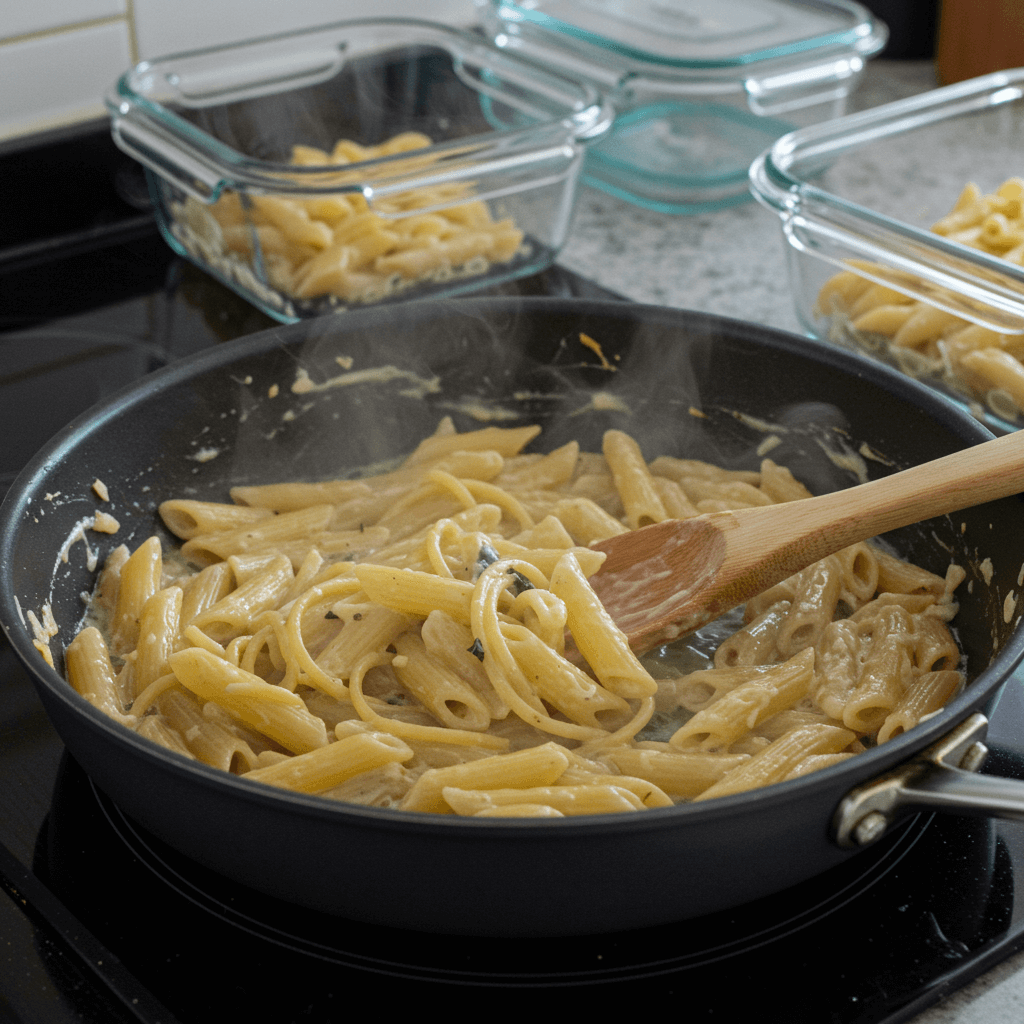
Seasonal Ingredient Swaps
Garlic parmesan chicken pasta adapts beautifully to seasonal produce:
• Spring: peas, asparagus, lemon zest
• Summer: cherry tomatoes, fresh basil, corn
• Fall: butternut squash, sage, toasted pine nuts
• Winter: roasted mushrooms, spinach, rosemary
Vegetarian Alternatives
For meat-free versions of garlic parmesan chicken pasta, substitute chicken with mushrooms, eggplant, or cauliflower. These vegetables absorb flavor well and provide hearty texture. Protein-rich options like chickpeas or white beans work wonderfully, too.
Frequently Asked Questions
Home cooks ask the same questions about garlic parmesan chicken pasta over and over. These common concerns help new cooks avoid mistakes and create better results. Understanding these basics makes the difference between success and frustration.
Recipe questions often focus on ingredients, techniques, and troubleshooting problems. Most issues stem from temperature control, ingredient quality, or timing mistakes. Simple solutions fix the majority of cooking problems.
What is parmesan garlic sauce made of?
Parmesan garlic sauce contains just five essential ingredients that work together perfectly. Each component serves a specific purpose in creating the final creamy texture and rich flavor profile.
Core Ingredients: • Fresh garlic – provides aromatic foundation and sharp flavor notes • Quality parmesan cheese – adds nutty, salty depth and natural thickening power
• Heavy cream – creates rich, velvety texture that coats pasta perfectly • Butter – adds richness and helps bind sauce components together • Pasta water – contains starch that helps everything stick to noodles
The magic happens when you combine these simple ingredients using proper technique and temperature control.
What pasta goes with chicken parmesan?
Long pasta shapes work best with creamy chicken dishes because they hold sauce better than short varieties. The sauce clings to longer noodles and creates better flavor in every bite.
Top Pasta Choices: • Fettuccine – wide ribbons catch and hold creamy sauces perfectly • Linguine – slightly thinner but still excellent for cream-based dishes • Pappardelle – extra-wide ribbons create restaurant-style presentation • Tagliatelle – similar texture to fettuccine with elegant appearance
These pasta shapes create maximum surface area for sauce contact, which makes each bite more flavorful and satisfying.
Why is it called “marry me pasta”?
Marry me pasta got its name from social media users who claimed the dish tasted so amazing that someone might propose after eating it. Food bloggers created this catchy name around 2018-2019.
Social Media Origins: The term became viral on platforms like TikTok and Instagram. Recipe creators wanted memorable names that would stick in people’s minds. “Marry me” suggests ultimate satisfaction and love at first bite.
Thousands of home cooks now use hashtags like #marrymepasta when sharing their versions online.
What sauce goes best with chicken pasta?
Cream-based sauces pair naturally with chicken because they complement rather than compete with mild chicken flavors. The richness makes chicken taste more luxurious and satisfying.
Perfect Sauce Options: • Garlic parmesan cream – the most popular choice for good reason • Lemon garlic cream – adds brightness to balance rich ingredients • Mushroom cream sauce – earthy flavors work beautifully with chicken • Sun-dried tomato cream – provides color and tangy flavor contrast
Rich sauces work best with simply seasoned chicken, while acidic elements like lemon brighten heavy cream dishes.
How to make creamy garlic pasta sauce?
Creating creamy garlic sauce requires patience and proper temperature control. High heat ruins cream sauces by causing separation and curdling.
Step-by-Step Method:
Start with butter – melt slowly over medium heat to prevent burning
Add minced garlic – cook 30-45 seconds until fragrant but not brown
Pour cream gradually – prevents temperature shock and curdling
Bring to gentle simmer – never let cream reach rolling boil
Add cheese slowly – sprinkle small amounts while whisking constantly
Adjust consistency – use pasta water to thin if needed
Keep heat at medium or lower throughout the entire process for smooth, creamy results.
How to melt parmesan cheese into sauce?
Melting parmesan properly prevents lumpy, separated sauces that ruin otherwise perfect dishes. Temperature control and technique make all the difference.
Professional Technique: • Remove pan from heat before adding cheese • Add grated parmesan in small handfuls, not all at once • Whisk constantly while adding cheese to prevent clumps • Let each addition melt completely before adding more • Use freshly grated cheese for smoothest melting
Temperature Guidelines: Keep your cream sauce at gentle simmer or lower when adding cheese. High heat causes proteins to seize up and create grainy texture.
Troubleshooting Tips: If sauce separates, remove from heat immediately. Add tablespoon of cold cream and whisk vigorously. This often saves broken sauces and restores smooth consistency.
Quality Matters: Fresh grated parmesan melts much better than pre-shredded varieties. Pre-shredded cheese contains anti-caking agents that interfere with smooth melting results.
Storage and Prep: Take grated cheese out of refrigerator 15-20 minutes before cooking. Room temperature cheese melts more evenly than cold cheese straight from the fridge.
Common Mistakes: • Adding cheese to sauce that’s too hot • Dumping all cheese in at once instead of gradually • Using pre-shredded cheese instead of freshly grated • Not whisking constantly during cheese addition • Cooking over high heat instead of gentle simmer
These simple techniques separate amateur results from professional-quality creamy pasta sauces that taste like restaurant dishes.

Storage, Reheating & Final Tips
Proper storage keeps your leftover garlic parmesan chicken pasta tasting fresh for several days. Many home cooks struggle with reheating cream-based dishes without ruining the texture. Smart storage and reheating techniques maintain the original flavors and consistency of this creamy favorite.
Garlic parmesan chicken pasta also works wonderfully for meal prep—ideal for busy families who want homemade dinners throughout the week. Planning ahead saves time and money while delivering restaurant-quality meals at home.
Storage Guidelines
Leftover garlic parmesan chicken pasta stays fresh in the refrigerator for 3–4 days when stored correctly. Cool the dish completely before refrigerating to prevent bacterial growth. Store in airtight containers to maintain moisture and prevent absorption of other flavors.
Refrigerator Storage Steps:
• Let pasta cool to room temperature first (within 2 hours of cooking)
• Transfer to glass or plastic containers with tight-fitting lids
• Store in refrigerator at 40°F or below
• Label containers with date for easy tracking
• Use within 3–4 days for best quality and safety
Freezer Storage Options:
Frozen garlic parmesan chicken pasta maintains quality for up to 3 months when properly packaged. While cream sauces can separate slightly during freezing, they usually come back together when reheated gently.
Freezing Instructions:
• Cool completely before freezing
• Use freezer-safe containers or heavy-duty freezer bags
• Leave 1-inch headspace for expansion
• Remove as much air as possible to prevent freezer burn
• Freeze in individual portions for easier reheating
Reheating Methods
Reheating garlic parmesan chicken pasta requires gentle heat to prevent separation and maintain a smooth, creamy texture. High heat causes cream sauces to break and become grainy or oily.
Stovetop Reheating (Best Method):
• Add pasta to cold pan with splash of milk or cream
• Heat over low-medium heat, stirring frequently
• Add pasta water or broth if mixture seems dry
• Heat until warmed through (about 5–7 minutes)
• Taste and adjust seasoning as needed
Microwave Reheating:
• Place pasta in microwave-safe dish
• Add 2–3 tablespoons milk or cream
• Cover with microwave-safe lid or plastic wrap
• Heat in 30-second intervals, stirring between each
• Continue until heated through (usually 2–3 minutes total)
Oven Reheating:
Baked reheating works well for larger portions and family-style serving of garlic parmesan chicken pasta. This method heats everything evenly without constant stirring.
• Preheat oven to 350°F
• Place pasta in covered baking dish
• Add splash of cream or milk
• Cover tightly with foil
• Heat 15–20 minutes until warmed through
Make-Ahead Tips
Meal prep success for garlic parmesan chicken pasta depends on smart preparation and storage techniques. Some components work better when prepared separately and combined later.
Component Preparation:
• Cook and season chicken ahead of time
• Prepare sauce base without adding final cheese
• Cook pasta slightly underdone for reheating
• Store components separately for best results
• Combine and finish when ready to serve
Weekly Meal Prep Strategy:
• Prepare large batch on Sunday for weeknight dinners
• Divide into individual containers for easy reheating
• Add fresh herbs when reheating for bright flavor
• Keep extra parmesan cheese for finishing touches
Troubleshooting Common Issues
Garlic parmesan chicken pasta is easy to rescue if something goes wrong during reheating. Here’s how to fix the most common issues.
Fixing Broken Sauces:
• Remove from heat immediately
• Add cold cream and whisk vigorously
• Use immersion blender for severe separation
• Strain if lumps won’t dissolve
• Start over if sauce won’t come together
Dry Pasta Solutions:
• Add splash of cream, milk, or pasta water
• Toss with small amount of butter
• Heat gently while adding liquid gradually
• Don’t add too much liquid at once
Bland Flavor Fixes:
• Taste and add salt first (most common issue)
• Squeeze fresh lemon juice for brightness
• Add freshly cracked black pepper
• Sprinkle more parmesan cheese
• Garnish with fresh herbs
Final Success Tips
Perfect timing makes garlic parmesan chicken pasta shine at family dinners and special occasions. Serve immediately while hot for the best texture and flavor experience.
Serving Suggestions:
• Warm serving bowls in low oven before plating
• Garnish with fresh parsley and extra parmesan
• Serve with crusty bread for sauce dipping
• Pair with simple green salad for balance
• Offer red pepper flakes for heat lovers
Professional Presentation:
• Twirl pasta with tongs for elegant plating
• Place chicken pieces on top for visual appeal
• Drizzle extra sauce around plate edges
• Add fresh herb sprigs for color contrast
• Serve on warmed plates for restaurant feel
Family-Style Serving:
Large batch serving works perfectly for gatherings and potluck dinners. Keep garlic parmesan chicken pasta warm and let people serve themselves.
• Serve directly from cooking pan for casual meals
• Use warming tray to maintain temperature
• Provide serving spoons and tongs
• Set out extra parmesan and herbs
• Keep bread basket nearby for complete meal
This comfort food classic brings families together around the dinner table. The combination of tender chicken, creamy sauce, and perfectly cooked pasta makes garlic parmesan chicken pasta a dish that creates memories long after the meal ends.
Discover Daily Cooking Inspiration on Our Instagram!
At ToDaRecipes, we’re passionate about making home cooking fun, easy, and delicious for everyone. Whether you’re looking for quick weekday meals, comforting classics, or bold new flavors, we’ve got recipes that fit your lifestyle.
Want even more inspiration? We share daily recipe ideas, behind-the-scenes kitchen tips, and step-by-step cooking videos on our Instagram page. It’s the perfect place to stay connected and get fresh ideas for your next meal.
👉 Follow us on Instagram for your daily dose of food creativity!
By joining our Instagram community, you’ll be the first to know about new recipes, special features, and exclusive content you won’t find anywhere else.


